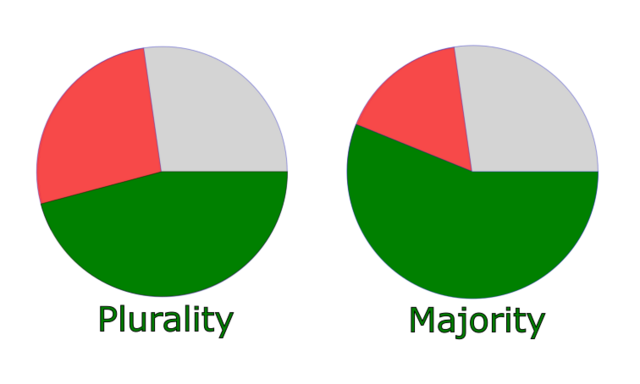Plurality_(voting)
Plurality (voting)
Poll most votes, but less than half overall
A plurality vote (in North American English) or relative majority (in British English)[1] describes the circumstance when a party, candidate, or proposition polls more votes than any other but does not receive more than half of all votes cast.[2]
It has been suggested that this article be merged into Plurality voting. (Discuss) Proposed since January 2024. |

For example, if from 100 votes that were cast, 45 were for Candidate A, 30 were for Candidate B and 25 were for Candidate C, then Candidate A received a plurality of votes but not a majority. In some votes, the winning candidate or proposition may have only a plurality, depending on the rules of the organization holding the vote.[3]